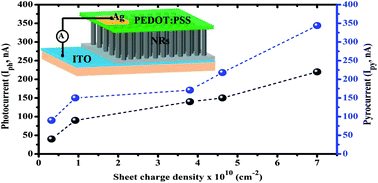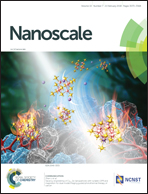Doping controlled pyro-phototronic effect in self-powered zinc oxide photodetector for enhancement of photoresponse†
Abstract
The pyro-phototronic effect can be used in pyroelectric semiconductor materials to significantly contribute in enhancing the self-powered photoresponse of photodetectors (PDs) via modulation of the photogenerated charge density. The pyro-phototronic effect in zinc oxide (ZnO) nanorods (NRs) was exploited thoroughly by doping with halogen elements, such as fluorine, chlorine (Cl), bromine and iodine. Cl-doped ZnO NRs (Cl : ZnO NRs) induces a large number of free charge carriers to enhance the self-powered photoresponse behavior (nearly 333% enhancement in response current) due to the pyro-phototronic effect as compared to pristine ZnO NRs. Moreover, 405% enhancement in pyrocurrent was measured for the Cl : ZnO NRs PD under a ultraviolet illumination intensity of 3 mW cm−2, as compared to 0.3 mW cm−2, in the absence of external bias voltage. Furthermore, other photoresponse parameters such as responsivity, external quantum efficiency and specific detectivity are measured to be higher due to the pyro-phototronic effect. Therefore, this study reveals the direct use of the pyro-phototronic effect to enhance the self-powered photoresponse.



 Please wait while we load your content...
Please wait while we load your content...